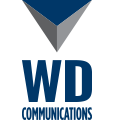BACKGROUND
WD Communications offers world-class scientific writing courses and coaching. We help our clients produce effective, efficient documents for regulatory submission. Our tailored courses help groups ensure consistency among their scientific writers.
Learn more below:
Medical Writing
Have you been searching for a logical process to apply to writing tasks in the medical field? Are you looking to save time when documenting medical procedures and reports?
In this course, you will learn techniques for increasing the effectiveness and the efficiency of your writing while also focusing on the needs of different readers.
Audience
Writers in a health-care field who target highly specialized audiences and nontechnical readers
Length
Two days (one day of group work plus 45-minute individual conferences on the second day)
Outcomes
At the end of this course, participants will:
-
Strengthen clarity and readability of written documents.
-
Use active and passive verbs appropriately.
-
Format complex information for multiple readers.
-
Incorporate medical terms, abbreviations, and acronyms properly.
-
Write summaries that capture the accurate level of detail.
Scientific Writing
Are you a member of the research community who feels challenged by having to write precise documentation and comply with industry standards?
This course helps you assess the needs of multiple readers as well as draft and organize content. You will also learn to strengthen your writing through appropriate summarizing, formatting, and editing.
Audience
Scientific writers who write documentation for regulatory agencies, lab notebooks, clinical studies, protocols, investigator documents, and technical memos
Length
One day of group work, plus a 30-minute individual conference on the second day
Outcomes
At the end of this course, participants will:
-
Assess the needs of multiple readers.
-
Select, organize, and document clearly and objectively, whether starting electronically or on paper.
-
Summarize and format to highlight key points and increase readability.
-
Apply transitional techniques to convey a cohesive style.
-
Use active and passive verbs appropriately.
Writing Productive Protocols
Is your company depending on your abilities to create a clinical-study protocol? Even though you are trying your best, do you still face challenges in making the sections clear and precise?
This course minimizes these challenges by offering a logical process to ensure appropriate content, format, and style.
Audience
Scientists and researchers who need to document plans for clinical research
Length
One day of group work; a second day of 30-minute individual conferences for each participant
Outcomes
At the end of this course, participants will:
-
Create required content for protocol sections.
-
Generate and organize quickly by using freewriting, concept maps, and flow diagrams.
-
Use precise, unambiguous words.
-
Strengthen visual impact with formatting and schematics.
-
Improve readability by using active voice, transitions, and parallel structure.
Clinical Monitoring Reports
Do you feel challenged when you have to convert monitoring comments and observations into a clear, concise report?
This course provides strategies for writing monitoring observations and action items thoroughly, clearly, and appropriately. Course content also focuses on meeting the needs of readers from different backgrounds and cultures.
Audience
Writers and reviewers of Clinical Monitoring Reports
Length
One day
Outcomes
At the end of this course, participants will:
-
Identify the information that readers of monitoring reports require.
-
Place objective, specific observations and action items in the proper position.
-
Organize and present report content clearly and concisely.
-
Write for readers with different backgrounds and cultures.
-
Improve report readability by using formatting techniques.
- Select information for a summary.






